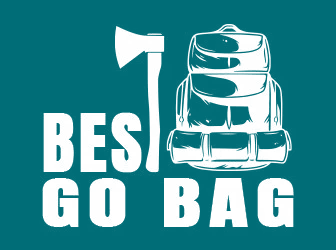When was the last time you looked at a U.S. weather map and saw clear skies across the country?
I honestly can’t remember the last time for me. And it’s not just isolated winter storms here and there. They’re all over the country almost every day. Some are so massive they cover dozens of states.
They say El Niño is responsible. This weather pattern normally brings wet and warm weather with it. Well, we’re getting the wet, but not so much the warmth.
Nearly the entire country was recently in the grips of a brutal arctic blast. No offense to El Niño, but it is no match for a polar vortex. The vortex will send El Niño to the canvas every time they enter the ring together.
Outages All Too Frequent
Recent winter storms, blizzards, and tornadoes resulted in well over 1 million homes and businesses losing power. Not to mention over $1 billion in damages.
Now, if our country’s infrastructure was solid enough to handle severe winter weather, hearty Americans could deal with it. Even the most violent storms and arctic blasts subside eventually.
But the problem is that our frail, aging infrastructure is incapable of handling extreme weather. Power outages occur almost every time a winter storm breaks out.
People shiver in their homes and try to survive until power comes back on. Sometimes that’s only a matter of hours. Other times it can be days or weeks.
70% Caused by Weather
It’s easy to say extreme weather affects our country’s infrastructure. But let’s take a closer look at why this happens.
The U.S. Department of Energy tells us 70% of power outages in the U.S. are caused by weather-related grid disruptions.
The actual cause of those disruptions is usually strong winds and falling trees damaging transmission lines. Consider yourself fortunate if you live in a neighborhood where transmission lines are buried underground.
Another major problem is overloaded systems. When temperatures get too cold, everyone is running their furnaces more than usual. And when it gets too hot, air conditioners get a heavy workout.
This puts a strain on the electric grid and can overload the system. These days, rolling blackouts are used to avoid a total collapse. They are an inconvenience, but are worth it if they prevent a long-lasting blackout.
Ice & Flooding Contribute
During the winter, even if no trees fall on power lines, ice can accumulate on those lines. That can result in equipment being damaged and wires going down. Widespread blackouts can occur.
Flooding is another big issue, especially in the South. As well as when winter snow turns into rain in other parts of the country as temperatures warm.
That flooding can cause power disruptions due to damaged equipment. It can also make roads impassable.
And if utility crews can’t access the impacted areas due to flooding, power outages last even longer than they would otherwise.
Power Failures Can Be Deadly
Winter storms not only affect the availability of electrical power. They also result in economic losses. Without power, many businesses have to temporarily shut down. It’s estimated that $150 billion in losses occurred in the U.S. in a recent year due to weather.
Communications are also negatively affected by the increase in the number and severity of winter storms. Phone networks and Internet services have been temporarily shut down. Which means it’s impossible to reach emergency response crews.
Grid failures have led to many deaths from the cold. Those unable to bug out must hunker down. And that doesn’t always end well.
And even the survivors have to deal with infrastructure damage caused by the storms. The grid often requires costly and time-consuming repairs before things return to “normal.”
You Can’t Count on FEMA
For those counting on FEMA to save them in an emergency, well, I admire their faith. But I question their logic.
The truth is, the government probably won’t be able to get to you soon enough to help you avoid the misery power outages cause.
By its own admission, FEMA is understaffed and underfunded. That’s why their website encourages people to prepare as much as possible.
They know they are incapable of doing what they were designed to do. Especially during those first crucial 48 to 72 hours. If FEMA realizes that people need to prepare for emergencies, we certainly should as well.
Working on the Problems
Now, the government is well aware of these problems. And there are a number of initiatives underway to combat them.
They are working on smart grid systems with advanced monitoring systems. They‘re encouraging the use of solar panels and wind turbines to reduce reliance on centralized grids.
Another project is microgrids, which are more localized and can work independently when a widespread grid failure occurs.
They’re trying to improve early warning systems. That could result in preemptive power shutdowns and the reinforcement of vulnerable infrastructure.
Take Matters Into Your Own Hands
That’s all well and good. And I’m glad they’re taking the situation seriously. But the bottom line is, none of these fixes are going to help us in the near future.
Extreme weather isn’t going away. By all indications, it will continue to ramp up. That means more frequent storms and more severe storms.
It’s up to every American to protect themselves and their families with backup power. You might not be able to afford an entire home generator system, but backup power of any kind can at least keep some devices functioning.
And that could mean the difference between life and death.


